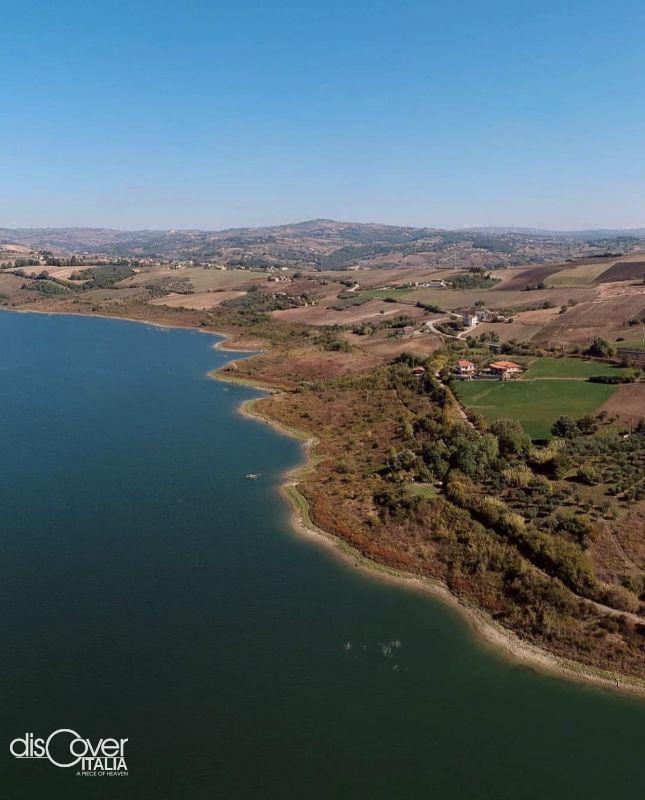Fifty years ago, water flowed through the valley at the foot of the Matese with the Tammaro river, which has its origin precisely in those mountains.
 All around rose hills covered with lush vineyards and fertile wheat fields. It was only in the mid-1970s that a dam blocked the river's course, creating an artificial lakefor irrigation in that part of the upper Sannio bordering Molise. This is how Lake Campolattaro was born, named after the municipality in whose territory the large reservoir extends. It gave rise to an important wetland, which soon became a resting place for numerous species of migratory birds, especially along the routes used in spring movements.
All around rose hills covered with lush vineyards and fertile wheat fields. It was only in the mid-1970s that a dam blocked the river's course, creating an artificial lakefor irrigation in that part of the upper Sannio bordering Molise. This is how Lake Campolattaro was born, named after the municipality in whose territory the large reservoir extends. It gave rise to an important wetland, which soon became a resting place for numerous species of migratory birds, especially along the routes used in spring movements.
The lake and the surrounding valley, covering an extension of a thousand hectares between the municipalities of Campolattaro and Morcone, have therefore become a Site of Community Interest and a Special Protection Area. The variety of avifauna that gathers there is extraordinary: 170 migratory species including white storks, cranes, spoonbills, marsh harriers, red-footed falcons, lesser harriers, ducks and glossy ibis. There is no shortage of both daytime and nocturnal birds of prey such as buzzards, kestrels, black kites, scops owls, owls, tawny owls and barn owls. Bee-eaters (symbols of the park), hoopoes, orioles, tits, finches, warblers and a colony of herons nest here.
The use of the oasis, managed by the WWF, is particularly oriented towards birdwatching, even by bicycle and for this reason the area was crowned in 2013 as the best organized area for bird observation. There is, however, no shortage of specimens of reptiles such as the red-bellied toad, the green-bellied toad, the yellow-bellied toad and the crested newt. Mammals are represented by fox, marten, polecat, marten, hare, weasel, dormouse, hedgehog, mole and oak, as well as several species of bats.
The vegetation is varied and rich, with common reeds and cattails in the marshy areas; meadows with violets, daffodils, brooms, daisies and various species of orchids; the trees are willows, poplars and alders; the hygrophilous forest offers hawthorn and dog rose around the lake.
The oasis is organized with educational routes, guided tours, environmental education activities. You can also practice trekking and canoeing here.




Comments powered by CComment